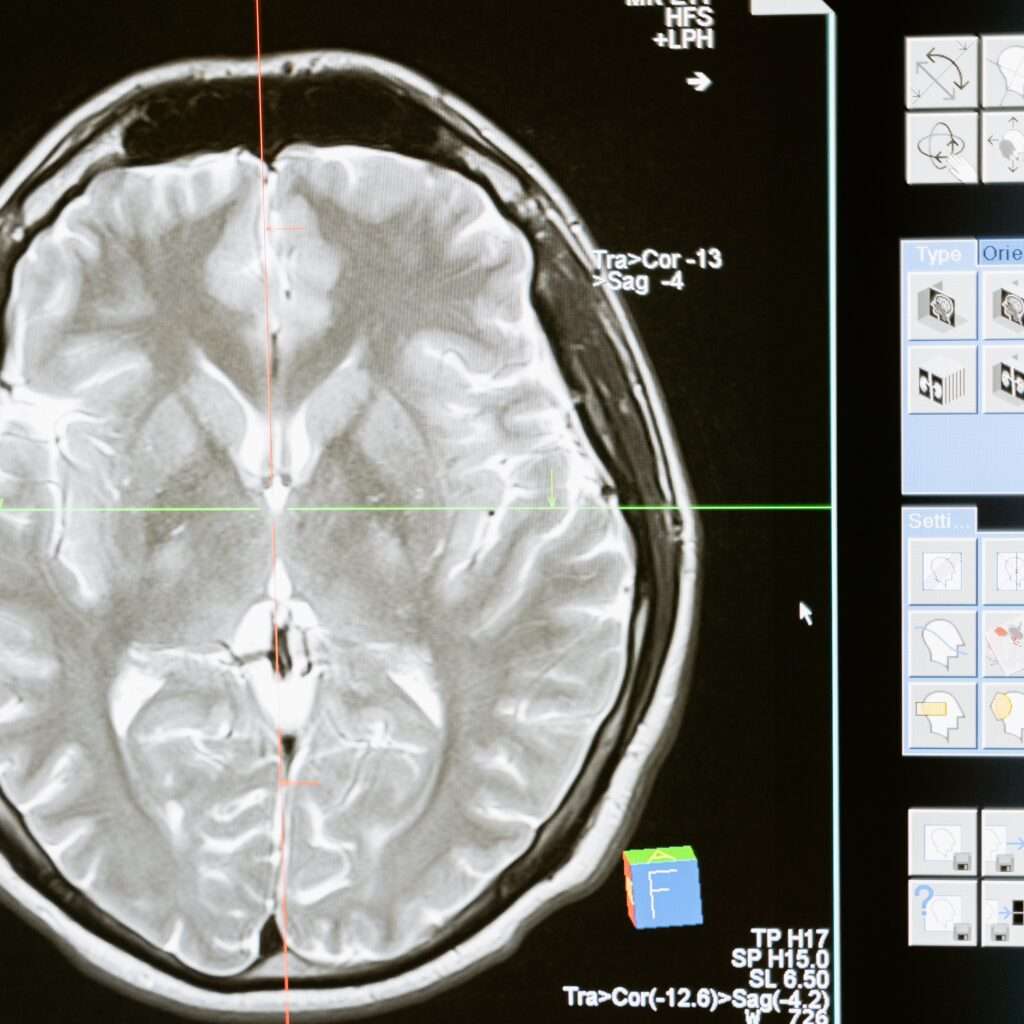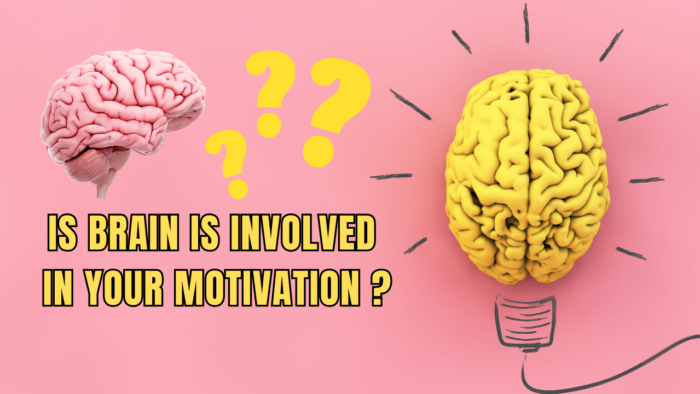Motivation is a fundamental force that drives human behavior. It’s what pushes us to achieve our goals, push our brains and overcome obstacles. But have you ever wondered what’s happening in your brain when you’re motivated? What neural processes underlie this complex psychological phenomenon? In this blog post, we will delve deep into the fascinating world of the neuroscience of motivation.
The Brain’s Reward System
At the heart of motivation lies the brain’s reward system, a complex network of neural circuits that play a pivotal role in shaping our behavior. The reward system is primarily centered around two key regions: the nucleus accumbens and the ventral tegmental area (VTA).

The Nucleus Accumbens
The nucleus accumbens, located in the basal forebrain, is often referred to as the brain’s “pleasure center.” This region is associated with the anticipation and experience of pleasure and reward. When you engage in activities that you find rewarding, such as eating delicious food or receiving praise for your accomplishments, the nucleus accumbens is activated, releasing a surge of dopamine—a neurotransmitter associated with pleasure and motivation.
Studies have shown that the nucleus accumbens plays a crucial role in reinforcing behavior. When an action leads to a rewarding outcome, the brain strengthens the neural pathways associated with that action, making you more likely to repeat it in the future. This process, known as reinforcement learning, is at the core of motivation.
The Ventral Tegmental Area (VTA)
The VTA, located in the midbrain, is another critical component of the brain’s reward system. It is the source of dopamine, which is released into various regions of the brain, including the nucleus accumbens. Dopamine release in the VTA is a key driver of motivation. When you anticipate a reward, such as a promotion at work or a satisfying meal, the VTA becomes more active, leading to increased dopamine release. This, in turn, enhances your motivation to pursue the reward.
Decision-Making and the Prefrontal Cortex
Motivation is not solely about seeking pleasure; it also involves making decisions about which actions are worth pursuing. This aspect of motivation is closely tied to the prefrontal cortex, particularly the ventromedial prefrontal cortex (vmPFC).
The Ventromedial Prefrontal Cortex (vmPFC)
The vmPFC is responsible for evaluating potential rewards and their outcomes. When faced with a choice, this region helps individuals weigh the costs and benefits of different actions. It plays a crucial role in decision-making by integrating information about the expected rewards and potential risks associated with each option.
For example, if you’re considering whether to start a new business venture, your vmPFC will assess the potential financial gains and the risks involved. If the expected rewards outweigh the risks, your motivation to pursue the venture will be higher. On the other hand, if the risks outweigh the rewards, your motivation may be dampened.
Emotions and the Amygdala
Motivation is not purely a rational process; emotions also play a significant role. The amygdala, a small, almond-shaped structure deep within the brain, is a key player in the emotional aspects of motivation.
The Amygdala
The amygdala is associated with emotional processing and the generation of emotional responses. It helps determine the emotional significance of stimuli in your environment. For example, if you’re passionate about a particular cause, the amygdala may become activated when you encounter information related to that cause, intensifying your motivation to get involved.
Moreover, the amygdala is involved in the brain’s response to threats and challenges. When faced with a difficult task or a stressful situation, the amygdala can trigger a “fight or flight” response, which can boost your motivation to confront or overcome the challenge.
Basic Drives and the Hypothalamus
Motivation isn’t limited to pursuing rewards or achieving personal goals; it also includes satisfying basic biological drives such as hunger, thirst, and sexual motivation. The hypothalamus, a small but vital region at the base of the brain, plays a central role in regulating these fundamental motivations.
The Hypothalamus
The hypothalamus serves as the control center for various physiological processes, including the regulation of hunger and thirst. It contains specialized regions that monitor the body’s internal state and respond to changes by triggering appropriate motivations.
For instance, when your body’s energy reserves are low, the hypothalamus releases signals that make you feel hungry, motivating you to seek food. Similarly, when you’re dehydrated, it prompts you to drink, satisfying your thirst. These basic motivations are essential for your survival and well-being.
Arousal and the Brainstem
The brainstem, which includes structures like the ventral tegmental area (VTA) and the locus coeruleus, plays a crucial role in regulating arousal and alertness. While arousal might not be the first thing that comes to mind when you think of motivation, it can have a significant impact on your motivation levels.
The Brainstem
The brainstem helps maintain your state of wakefulness and alertness. When you’re well-rested and alert, you’re more likely to feel motivated and ready to tackle tasks and challenges. Conversely, when you’re fatigued or drowsy, your motivation can wane.
The ventral tegmental area (VTA) in the brainstem, in addition to its role in the reward system, contributes to maintaining a state of alertness and motivation. It releases dopamine not only in response to rewarding stimuli but also to novel or salient experiences. This dopamine release can boost your motivation to explore and engage with your surroundings.
The Interplay of Internal and External Factors
While we’ve explored several key brain regions involved in motivation, it’s essential to recognize that motivation is a highly complex phenomenon influenced by a multitude of factors. These include individual differences, personal goals, environmental cues, and social influences.

Individual Differences
People vary in their baseline levels of motivation, which can be influenced by genetic factors, personality traits, and past experiences. Some individuals may naturally have higher levels of motivation, while others may need external incentives to become motivated.
Personal Goals
The nature of your goals and aspirations can greatly influence your motivation. Goals that are personally meaningful and aligned with your values tend to generate higher levels of motivation. Additionally, setting clear and achievable goals can enhance your motivation to pursue them.
Environmental Cues
Your environment can either bolster or hinder your motivation. External cues, such as the presence of rewards or the availability of resources, can shape your motivation to engage in specific behaviors. For example, a well-organized workspace can boost your motivation to work efficiently.
Social Influences
Social factors, including peer pressure, social support, and competition, can exert a significant impact on motivation. Positive social interactions and encouragement from others can enhance your motivation, while negative social influences can diminish it.
Conclusion
Motivation is a multifaceted phenomenon that emerges from the intricate interplay of various brain regions and factors. While we’ve explored some of the key neural processes and structures involved in motivation, it’s important to remember that our understanding of this complex topic continues to evolve with ongoing research.
As we gain deeper insights into the neuroscience of motivation, we not only enhance our understanding of human behavior but also open up new possibilities for harnessing and cultivating motivation in our personal and professional lives. Whether you’re striving to achieve your goals, overcome obstacles, or simply stay motivated in your daily activities, knowing the inner workings of your brain can empower you to take control of your motivation and lead a more fulfilling life.
Read More Amazing Blogs like these –> LINK
If you wanna read informative blogs –> LINK
If you wanna read health blogs –> LINK




I do not even know how I ended up here but I thought this post was great I do not know who you are but certainly youre going to a famous blogger if you are not already Cheers
Hello Neat Post, I noticed a problem with your website in Internet Explorer. Could you please check this? IE remains the market leader, and a significant number of people will bypass your excellent writing because of this issue.